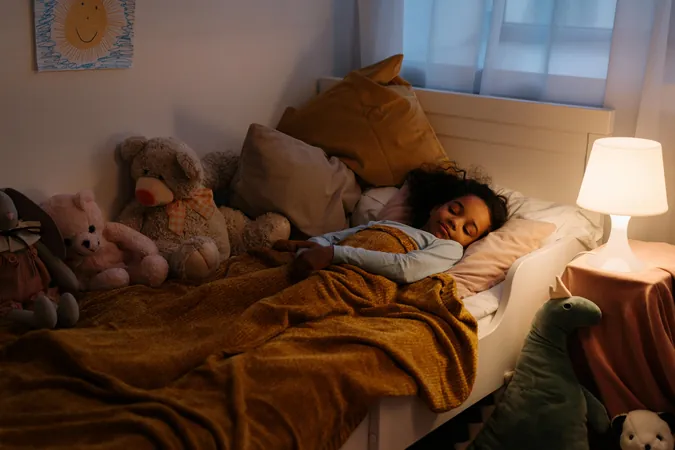
Unlock the Secrets of Healthy Sleep Through Fairy Tales!
2024-12-18
Author: Jia
Unlock the Secrets of Healthy Sleep Through Fairy Tales!
Fairy tales aren’t just timeless stories that captivate children’s imaginations; they may also hold valuable lessons about healthy sleep habits! Recently, researchers published fascinating findings in the Christmas issue of the BMJ, revealing that classic children’s stories can serve as engaging tools to educate kids about the importance of sleep.
The study by Megan Thomas and her colleagues examined four beloved fairy tales, each showcasing insights into the benefits of sleep, as well as common sleep disorders. Let’s dive into the magical world of these tales and see how they can teach our children about healthy sleep practices!
Fairy Tale Insights
In the enchanting narrative of Snow White, there’s a stark illustration of the consequences that poor sleep can have during the day. Characters like Grumpy, Sleepy, and Bashful symbolize the struggles associated with obstructive sleep apnea—a condition often seen in individuals with shorter stature. The authors suggest that irritability, fatigue, and social challenges faced by these characters mirror the real-life repercussions of sleep deprivation. Additionally, they point out the connection between Doc’s speech difficulties and the impacts of lack of sleep on attention and communication skills.
Switching gears to The Princess and the Pea, this tale hints at deeper issues, such as autism spectrum disorders that can be linked to sensory sensitivities and serious sleep challenges like insomnia. This story can help children understand that struggling to sleep isn’t just a minor issue—it may relate to more complex conditions.
Goldilocks and the Three Bears teaches a crucial lesson about the environment’s role in achieving restful slumber. The narrative subtly emphasizes that a serene atmosphere—where the bed is comfortable and the room temperature is "just right"—is vital for quality sleep. Parents might also consider the BEARS screener, which evaluates children’s sleep problems, based on Bedtime issues, Excessive daytime sleepiness, night Awakenings, Regularity and duration of sleep, and Snoring.
Let’s not forget about Peter Pan, where the adventures in Neverland shine a light on parasomnias, including sleepwalking, sleep talking, and night terrors. Peter experiences distressing dreams, which embody the reality of nightmares faced by many children. The underlying themes of stress and separation anxiety in the story mirror the struggles of kids who may come from challenging family dynamics, making Peter Pan’s journey all the more relatable.
Conclusion
These timeless tales not only entertain but also provide a window into understanding sleep health in a fun and engaging manner. As bedtime stories continue to play a pivotal role in children’s lives, parents and educators can leverage these narratives to spark conversations about the importance of sleep, ensuring that young ones get the restful nights they need for happy, healthy lives.
So, next time you tuck in your little ones with a story, remember: you may be opening the door to a world of wisdom about the importance of sleep! Who knew fairy tales could be the key to unlocking better sleep for our children? Let the magic of storytelling enhance their dreams! 💤✨


 Brasil (PT)
Brasil (PT)
 Canada (EN)
Canada (EN)
 Chile (ES)
Chile (ES)
 España (ES)
España (ES)
 France (FR)
France (FR)
 Hong Kong (EN)
Hong Kong (EN)
 Italia (IT)
Italia (IT)
 日本 (JA)
日本 (JA)
 Magyarország (HU)
Magyarország (HU)
 Norge (NO)
Norge (NO)
 Polska (PL)
Polska (PL)
 Schweiz (DE)
Schweiz (DE)
 Singapore (EN)
Singapore (EN)
 Sverige (SV)
Sverige (SV)
 Suomi (FI)
Suomi (FI)
 Türkiye (TR)
Türkiye (TR)